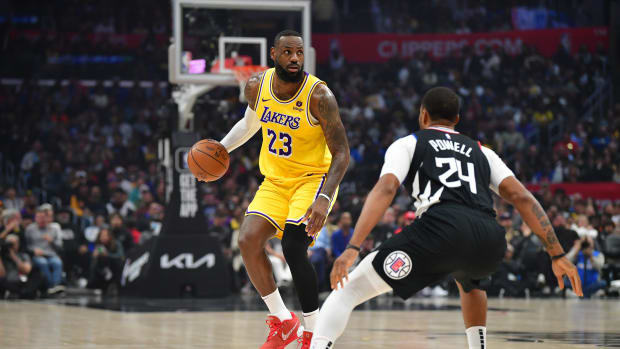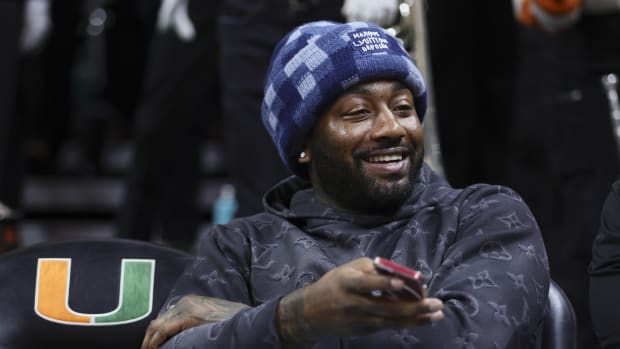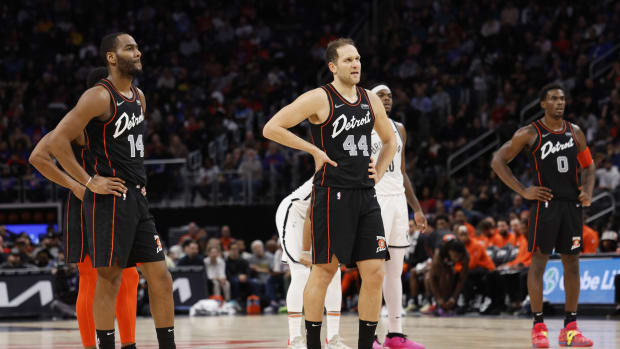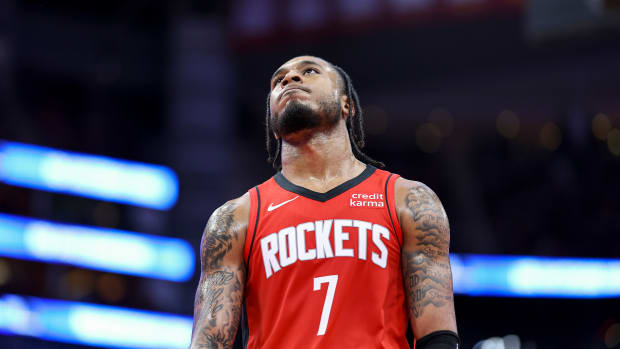Economics Hard to Ignore as NBA Looks to Reopen Practice Facilities
The NBA is coming back. Sort of. And maybe.
On Monday, the league issued a statement indicating that it has informed teams of a pending and partial resumption of activities. The league is considering new guidelines that would take effect as early as Friday, May 8. Most importantly, the guidelines would allow up to four players into a team’s facility at any one time.
The NBA makes clear that the framework for what it terms “limited, individual workouts” would be extremely limited in scope. For one, neither head coaches nor assistant coaches could participate. For another, practices and scrimmages would remain barred. Also, according to Shams Charania of The Athletic, players would be required to wear face masks while not engaged in physical activity. Furthermore, any nearby team employees—including health personnel—would need to wear gloves and keep a distance of at least 12 feet. In other words, a small subset of teammates could work out in the same facility at the same time but their shared presence wouldn’t constitute a “team activity” as that term is generally understood.
In addition, not all players might be able to take advantage of the guidelines. Team facilities can only be opened if doing so would comply with state and local laws. Those laws include any gathering restrictions, shelter-in-place orders, non-essential services closings and other measures designed to combat the coronavirus disease pandemic. Per analysis by CNN, more than 97% of the U.S. population is currently under a stay-at-home or shelter-in-place order. This percentage is expected to drop somewhat in the next few weeks as certain states anticipate lifting or moderating restrictions.
The NBA’s statement is understandably hesitant and cautious. The league is in the business of professional basketball, not epidemiology. It can’t predict the pandemic’s path, which has impacted states at very different rates and has sparked an intensifying debate over the appropriate balance of public health safeguards and employment considerations. This debate has led to the adoption of varying laws across the 50 states, with governors sometimes expressing conflicting viewpoints about the right direction for enduring the pandemic.
For a league that has teams in 21 states plus the District of Columbia and the Province of Ontario, a patchwork system of laws is highly disruptive. The NBA and its 30 franchises operate best when the same set of laws and regulations apply across the board. For now, relevant laws and regulations are jumbled. As Chris Mannix writes, that dynamic could conceivably provide a competitive advantage to certain teams.
Still, the NBA can make reasonable, science-based projections. In that sense, the NBA is just like a university, software company, retail store, restaurant or some other enterprise forced to limit operations and banish employees on account of the pandemic. Like other employers, the NBA is strategizing a plan to become fully operational as soon as it is sensible. And just like other employers, the NBA can’t make certain projections with the pandemic. It can only use its best judgment, which is why the league describes May 8 as a possible, but hardly guaranteed, date.
While safety is the most important consideration for restarting NBA games and practices, the economics of the situation are hard to ignore. The NBA and the National Basketball Players’ Association have negotiated a near-term pay arrangement for players, most of whom are paid on a 12-month basis. Players will be paid in full on May 1, but beginning on May 15, 25% of each player’s salary will be kept in escrow. Depending on the duration of the league’s lockdown, these pay reductions could increase in size over time. Whether players eventually recoup salary dollars that are escrowed will hinge on whether all or some of the postponed 2019–20 regular season and postseason games are rescheduled or canceled.
Lurking in the background is the force majeure clause found in Article XXXIX of the collective bargaining agreement. I detail the clause in a separate story, but its core feature could, if invoked, reshape the NBA for years to come. The clause enables the NBA to terminate the CBA in the event of a qualifying cataclysmic event. One such qualifying event is a pandemic.
The league has 60 days from the start of the pandemic to notify the union of its intent to invoke the clause. The 60-day clock presumably started on March 11, when the league suspended the 2019–20 season, or March 13, when President Donald Trump proclaimed a national emergency. In either case, the clock would expire during the second week of May. Given that context, the “limited, individual workouts” beginning on May 8 could be a sign of the league possessing credible hope it can salvage the season.
If the NBA nonetheless invokes the clause, both sides would be obligated to engage in good faith negotiations for the following 60-days. During that time, players would be legally barred from going on strike and owners would be legally barred from locking the players out. However, if no agreement is reached after those 60 days, the league and union could enter an uncertain era—including one where antitrust litigation might surface.
It’s true that four players possibly being able to work out at the same time in the same team facility on May 8 (or not long thereafter) hardly counts as the NBA’s return. But it’s a start. And teams will be able to provide players with a controlled, clean and likely safe setting from which to work out and maintain their skills (players will remain barred from working out in public health clubs, fitness centers and gyms).
We’ll keep you apprised of key developments.
Michael McCann is SI’s Legal Analyst. He is also an attorney and the Director of the Sports and Entertainment Law Institute at the University of New Hampshire Franklin Pierce School of Law.


































